As we know them today, glasses are composed of two pieces of lenses and a frame that supports them behind the ears. This setup dates back to the 18th century.
When prescription glasses first came out there was a pushback to wearing a foreign material on the face. However, with time and numerous benefits of eyewear, they became common. Allowing people to be more effective while living more fulfilling lives.
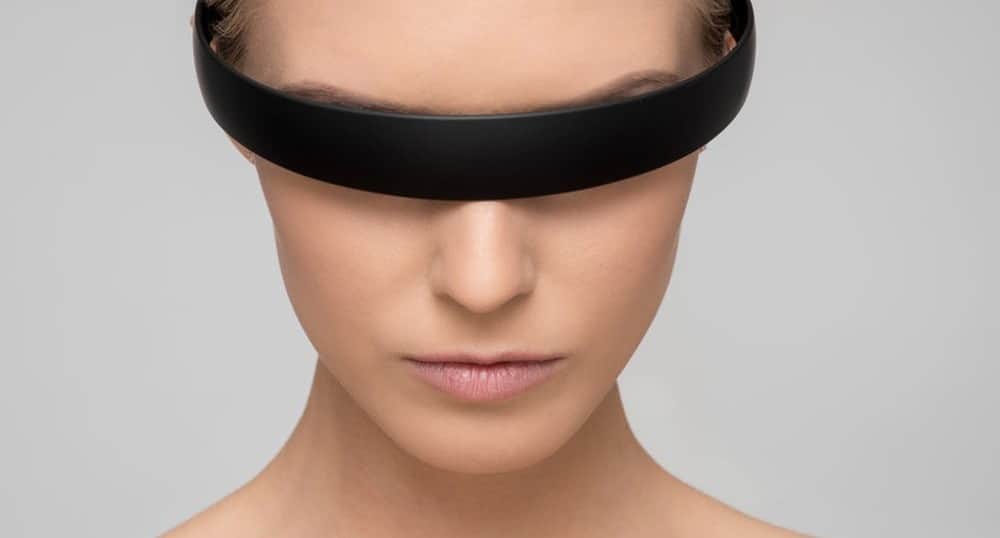
Like normal glasses, smart glasses are mounted on the head. But unlike regular prescription lenses, smart glasses often provide the wearer with added digital information and offer a slew of technological aids, such as notifications, navigation guidelines, recording videos, taking pictures and many others.
In this article, I will be trying to give you a holistic overview of smart glasses. We will be looking into the history of smart glasses, products that have been made, applications in real life and also some predictions about the future.
Broad Look at Smart Glasses
Smart glasses fall into the latest trend known as wearable technology Many of these devices offer features similar to that of a smartphone. Smart glasses enable processing information using internal components which is then displayed in front of the user. Often times, there is also connectivity to the internet for real-time assistance and application use.

Although not all smart glasses hold a built-in camera, those that do, enable taking videos/picture and in some cases real-time sharing of the wearer’s point of view (POV). This allows another party to view what is being recorded. However, the biggest advantage is that many of these functions can be completed hands-free. allowing the user greater mobility.
The initial and serious launch of this technology was brought to attention in 2013 when X Development LLC launched the Google Glass. If you are interested, I have written about the release itself and the reasons why the product did not really take of ass a widespread consumer product in my previous article.
During the initial launch, the glasses were marketed as an optical head-mounted display (OHMD), giving the user features of a traditional smartphone without the need to hold a device. The glasses themselves are transparent and allow the user to see through them. A small computer device projects images onto the lens, allowing the user to see both the information and the surroundings in front of them.
Short History of Smart Glasses
If you think smart glasses have been around for only a few years, you’d be wrong. Smart glasses can be dated back as far as the 1960s. Back in 1967, computer scientist Ivan Sutherland with the help of his students created The Sword of Damocles. Although crude, and bearing little resemblance to today’s smart glasses, this device is widely considered to be the first ever virtual reality head-mounted display system.
By tracking the wearer’s head movements, the device would display different wireframe rooms based on where the user was looking.
Fast forward to the 1980s and 1990s, when Canadian researcher Steve Mann began work on his WearCamp (wearable computer) solution which paved the way to computerized smart glasses.
For a more in-depth history of and general knowledge about smart glasses, feel free to check out this article I have previously written. Should you desire to dive deeper into the history and evolution of smart glasses, you can also check out this CNET article with visual illustrations about the topic.
Components of Smart Glasses
You probably have already guessed, but smart glasses are pretty much computers that can be worn on your head. The diagram below is an example from Google of one possible design setup for smart glasses. Other companies have come up with alternative designs for outcomes such as cosmetic appeal, sleek design, and subtlety.
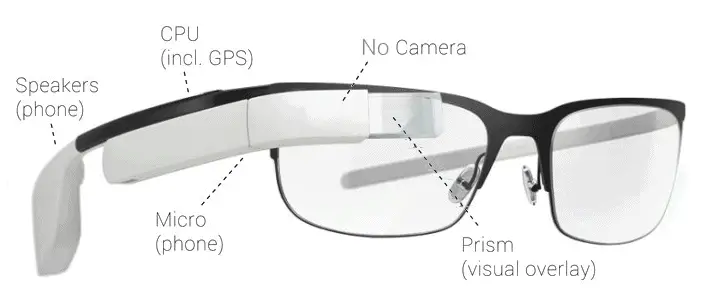
Similar to a smartphone, today’s smart glasses allow users to possess many of the same features as smartphones. The list included (but is not limited to)
- Calculator/Clock
- GPS Navigation
- Activity Tracker
- Music
- Camera and Video options (not all products)
- Wireless Connectivity
- Interactive assistants ( Siri, Google assistant )
- Calander + interactive scheduling with assistants
If you wish to record video, audio and capture hands-free images, then you’ll be delighted to find out that there options for smart glasses which host a microphone and HD camera. Additionally, these devices tend to have voice-command features. Those that don’t will be touch or gesture-sensitive.
There are many apps still better suited to phones than glasses and there is, of course, the case of staying true to what we’re used to. Nonetheless, there have been studies to show bold predictions on the use of smart glass by 2019.
Of course, if history is any indicator, then we can assume that through technological progress we have a tendency to move to the easier and more efficient manner of doing things. Most people within our highly digitized generation are becoming increasingly used to multi-tasking. It should make sense then, that the benefit of not having to look down or hold a device will eventually win over.
How Do Smart Glasses Work?
Here is a basic description of the crucial elements that make up smart glasses. Of course, since there are many different products with different implementations, it is just meant to give you a general overview of how smart glasses function.
Display
Visual information in digital form will be added on top of what is seen in the physical world. There are two main approaches to achieving partially transparent displays which will mix the digital images and the physical world.
Curved Mirror Combiner
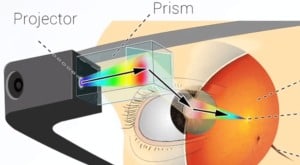
With this method, we can achieve a small and light device. However, the resolution and field of view are limited. Google Glass is best known for this approach. Below you will a diagram showing how the digital imagery reaches the wearer.
Although the issue of resolution and field of view can be solved, this creates yet another issue of greater device size and images which are less sharp.
Waveguide Hologram
This path promises an improved field of view and resolution with reasonable device size. If you were to look at a fiber optic cable from one size, you wouldn’t be able to see the light. The only source of light would be the red dot at the end of the cable. Waveguide lenses use the same property of unidirectional light-wave to guide a wave of light through a lens or plane, from one end to the other.
This technology is still in development and there hasn’t been much real-world proof that it works better than the traditional curved mirror option. Some examples of products using the waveguide implementation are Microsoft Hololens, Focals By North, Magic Leap and also Intel Vaunt, project which was later canceled.
Audio
Commonly, smart glasses feature the ability to both intake audio ( input ) and to send it out (output). Should the device house these features (as not all smart glasses do) then it will more than likely have the ability for the user to give voice commands.
The frames of smart glasses or any glasses for that matter sit on top of the ridge of the ear. Because there is no direct route through the eyer it wouldn’t make much sense for there to be speakers. The sound would be heard by others and wouldn’t transfer well into the ear of the user.
Because of this, smart glasses often use a method called bone conduction. This method transfers audio vibrations from the frames of the glasses through the small segment of skull that separates the outside of the head from the middle and inner ear. Once the vibrations reach the middle ear, three tiny bones transmute the sound of the outside world into meaningful sound representations.

Camera
Today, cameras have become advanced and mostly small enough to be easily incorporated into the frame of smart glasses. They’re able to take high-quality pictures and videos.
A growing concern here is the issue of the possibility of users secretly recording with their smart glasses. This is one of the big reasons why Google glass encountered so much negativity when it was first released.
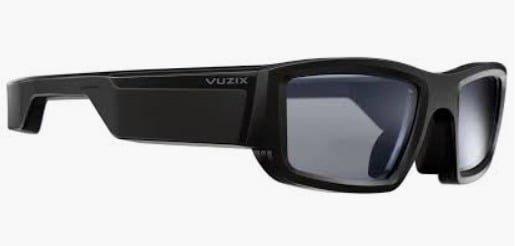
For this reason, as well as the fact that adding a camera still makes the glasses bulkier, several manufacturers have opted to implement their glasses without a camera. For example, Focals by North as well as Intel Vaunt were designed as “no camera” devices.
On the other hand, many smart glasses do have a camera included. Examples are Vuzix Blade, Google Glass Enterprise Edition 2, Everysight Raptor and others
Control of Smart Glasses
Intelligence in glasses is meant to offer us greater ease and efficiency. Because mobility is an aspect of said efficiency we need a way in which to control smart glasses which doesn’t sacrifice mobility.
Many smart glasses designs allow the user to control the device by either tapping, holding down, or swiping the controls. Various other developers such as Google have come up with voice recognition as an alternative way of control.
Focals by north are currently the only manufacturer that has a ring to control the device.
Types of Smart Glasses
Here is yet another way that smart glasses can be classified and differentiated based on their implementation of the display.
Monocular (Smart glasses)
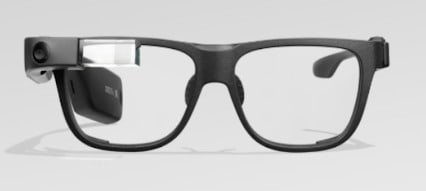
These glasses function as head-mounted displays with an optical engine on one of the lenses. This is similar to having a see-through smartphone. The information is available just out of the line of sight. Typically this sort of arrangement is most beneficial to those completing mission-critical tasks. This may also explain why Google decided to target enterprise targets. Devices within this category include Google Glass, Vuzix M300, Optivent’s Ora-2 and the Lumus Sleek.
Binocular ( Smart glasses )
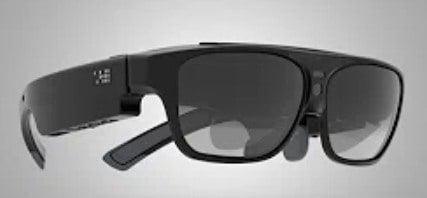
This setup features a Head Mounted Display (HMD) with two transparent displays, allowing the user to have a stetoscopic vision. The biggest notable difference is that the image can be viewed by both eyes instead of just one. By having an optical engine in front of each eye makes it possible to augment a greater part of the total field of view of the wearer.
Once again, these glasses are currently primarily aimed at mission-critical enterprise situations. Examples of devices within this category include: Epson Moverio, the ODG R-9 and the Sony SED-E1
Further information on Monocular, Binocular smart glasses and also alternative ways to classify different types of smart glasses can be found in the following article I have written.
What are Augmented Reality (AR) Smart Glasses?
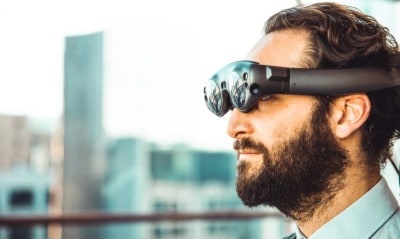
While the use of typical applications and gadgets in place of the phone are great, the real bread and butter lies with Augmented Reality (AR). This is the process of adding a layer of interactive digital information on top of what is already seen in the physical world. The point here is to enhance elements within visible reality for the benefit of the viewer.
AR blends the virtual and physical world through live video imagery. These images are then enhanced via computer generated graphics and superimposed onto physical reality via glasses/headsets or via the display on mobile devices.
The Future of AR Technology
Microsoft first showcased the demo for the HoloLens in 2015, and the world was shaken. They showed that virtual and augmented reality had barely been scrapped.
HoloLens has grown by leaps and bounds since then and most recently with the launch of the expensive HoloLens 2. Microsoft’s aim is to bridge the gap between you and your PC by augmenting Windows apps in your reality. They’re doing a great job for those who are able to afford it.
It seems like yesterday when hundreds of seemingly crazed enthusiasts took to the streets in search of virtual Pokemon. This was in 2016 and this was the year that Pokemon Go brought AR to the spotlight. Now people could interact with Pikachu and Charizard directly in their backyard. This is a great example of an emerging technology like AR finding its way into the mainstream market.
Not All Smart Glasses are AR Glasses
What defines smart glasses is the ability of the device to present information to the user. Akin to a smartwatch, the information presented may vary. This may range from text, incoming phone call, directions, and even blood pressure.
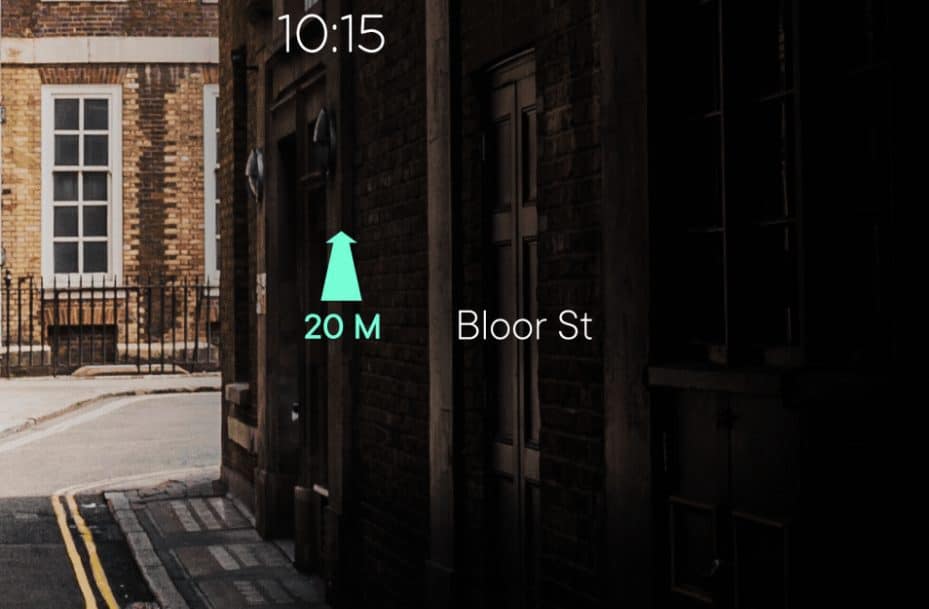
By far the biggest benefit of smart glasses is the convenience of not having to take your eyes off of what you’re doing to access necessary information. By this logic, smart glasses can be considered head mounted displays (HMDs).
Majority of smart glasses are built from transparent glasses which project a small floating screen. The differentiation here is that simply projecting information onto a transparent screen does not qualify as ‘augmented reality’.
Augmented Reality Glasses
AR is quickly becoming one of the biggest drivers of the tech industry globally. On the economic side, the AR market value is estimated to rise at a high pace and reach 100 billion by the year 2020 by many estimations.
It’s only natural to think that such estimations are over-optimistic. Yet, the current and future undiscovered benefit of AR to consumers and enterprise may reveal that this valuation is too low.
The reason? AR is quickly becoming a solution to challenges in various industries. Manufacturing and design are two of the biggest sectors benefiting from this impact.
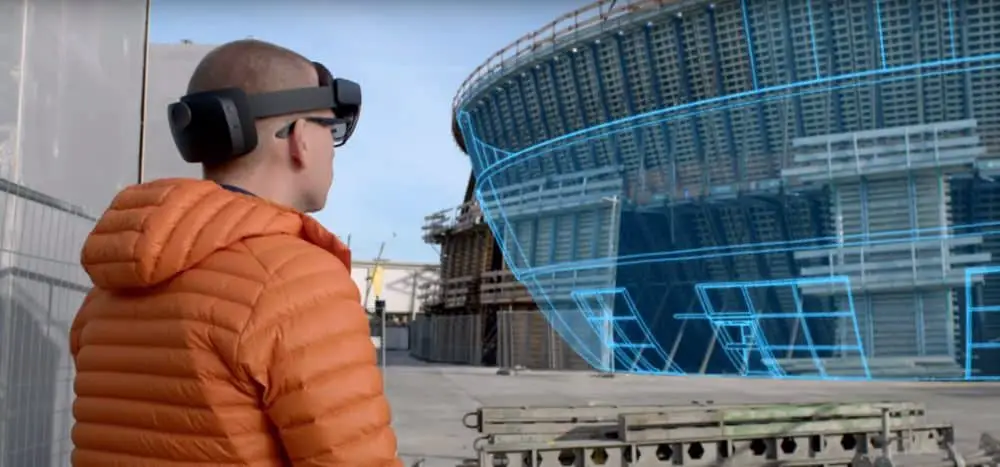
The point of AR glasses is to present digital information in an already present physical environment. Although we’re currently referring to them as AR glasses, it’s not uncommon to reference these as AR headsets. To enhance reality with AR, a wide field of view is necessary to be able to gather as much information as possible about the surrounding environment.
Thus, the hardware for AR technology will need to be more complex and require a larger device to complete the intended task. Because some units are bulky and take up a significantly larger portion of the head they are referred to as ‘headsets’.
As of now, AR devices may be grouped into three board categories:
- Wearable AR smart glasses/headsets
- Mobile/handheld AR (smartphone AR)
- Tethered AR head mounted units (HMDs)
Great examples of AR headsets are as follows: Microsoft HoloLens 2 (and also the first version), Meta 2 and Magic Leap One.
How Much do Smart Glasses Cost?
At this point, you may be interested in knowing what the price tag is for something like this. The biggest differentiators in price are function and purpose.
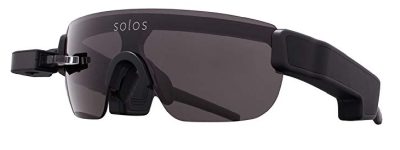
Keeping these in mind, the price for smart glasses (with display) can start around $500 and work its way up to around $5000. The large price range comes from different technical implementations (and capabilities) as well as the target group for the products (consumer vs enterprise)
Thus, usually the more specific and technologically advanced the components, the higher the price mark. For a more in-depth overview, check out this article I have previously written, listing out specific smart glasses along with their prices.
Why are Smart Glasses Generally Expensive?
Because smart glasses typically have a high asking price, they’ve yet to really gain mainstream popularity. But what really makes up the bulk of the price of smart glasses?

The answer is the display. As mentioned before, there are two main technical approaches to creating the see-through display of smart glasses. Neither of these approaches is cheap to manufacture at this point.
Based on historical evidence within technology, it’s safe to assume that as time passes the price will drop. When the price drop passes a certain threshold which the market is willing to accept, we should see smart glasses embraced by the wider public.
Should You Purchase Smart Glasses?
As with any decision, the ultimate choice will be yours. What you have to ask yourself at this point is whether you’re actually in need of smart glasses.
My prediction is that smart glasses for the regular consumer will eventually become as popular or more popular than smartphones. However, with the current technology and solutions offered, smart glasses mostly do not solve any real points better than a regular smartphone would. Combine this with the rather high price point and you have the two main reasons why smart glasses have yet taken off. And also the reason why you should probably wait as well.
However, if you are a business owner, looking to get an edge in today`s highly competitive market, smart glasses have a variety of fields where they can make your business processes more accurate, effective and less time-consuming.
What Can Smart Glasses Do? Different Use Cases
If there was a list of many things that smart glasses can currently be useful for, what would it look like? Stick around and read further to find out.
Healthcare
Smart glasses have a wide variety of different use cases in the field of healthcare. For example, they offer help to people with autism in their therapy. By using applications that aim to foster abilities which allow patients with autism to better understand and adapt to social situations to which they would otherwise not be able to adjust. You can read exactly how it is being done, from my previous article.

Surgery is a procedure which takes a tremendous amount of skill, time, and a body of related knowledge. Considering the consequences for failure are loss of life it’s important to get as much of an edge as possible to ensure a successful outcome.
Smart glasses along with augmented reality have several benefits in the operating room. For example, they enable digital images to be overlaid on the patient, and thus the surgeon “can see through patient” during surgery.
Smart glasses can also be great for collaboration – doctors on site can stream live video of the surgery and this allows for remote consultation and assistance. Read more about these use-cases as well as several others from my previous article “Augmented reality transforming surgery as we know it“
Additionally, in the field of medicine, I have covered several other topics which show the vast amount of opportunity and benefits that come with smart glasses:
* Hololens Life-Altering Medical Applications
* The Benefits of Augmented Reality In Medicine
* 3 Life-Changing Smart Glasses For People With Low Vision
Lastly, if you are interested in how technology can benefit patients and healthcare in general, feel free to check out my article describing how Virtual Reality is being used to train medical staff, alleviate pain, assist in therapy, and others.
Museums (virtual guides)

Museums, as it would seem, have taken a liking to AR. More museums are incorporating this tech into their displays to bring them to life. In 2017, Epson released a new line of smart glasses to be used in museums. This would immerse visitors by displaying information about the exhibition item next to it while leaving the display to be visible.
Because art is ever evolving in medium and context, Augmented reality creates an additional layer of abstraction for the user to interpret. This is exactly what digital artist Alex Mayhew has created as part of his AR installation called ReBlink. Although AR, in this case, is created mostly via smartphones / tablets, wearable glasses will eventually offer similar but even more immerse and full experience.
Warehouses (vision picking, product assembly)
If you know – you know about warehouse “picking”. This is the process of taking the right amount of items off shelves and shipping them off to waiting customers. I’m sure you can see how this makes the process a lot easier. Say hello to the innovation of hands-free order picking.

In fact, SmartPick is a solution dedicated to this industry. They show the pickers how many items to get from point A to point B. This eliminates confusion about product location, and leave’s the worker’s hands free.
If the topic sparked interest in you, feel free to read how such prominent companies as DHL and ACGO have incorporated Google Glass into their logistics and assembly processes from my previous article.
Construction

Using smart glasses in construction can improve the accuracy of construction considerably during the planning and design phase, as well as during assembly.
The ease of communication allows different interest groups, faster and more accurate completion of projects. The end result is less money and time spent. For a real in use-case scenario read how smart glasses aided in clearing a path for tunnel and concourse construction at LAX.
If you are interested to know more, I have written a detailed overview of how and where smart glasses and AR can benefit the construction industry.
Subtitling and Translation (e.g. theaters)
Similar to Museums, theaters have begun to take full advantage of smart glasses. Some larger establishments offer captions that can be viewed by booking a pair of smart glasses along with a theater ticket.
A great example of this is the National Theater, located in London. While the aim at this theater is to aid those with hearing loss, it can additionally be used to aid a foreign audience view the performance with subtitles.
This means access to theater, opera and similar stage productions to be accessible to those who previously weren’t able to. We’re excited about the possibility of further spreading art, culture, and joy!
Fitness and Training
Although most up to date phones have a step-tracker, these are not the most reliable sources for tracking your head. For starters, the place where you keep your phone may not be suitable to track your progress. Smart watches are better at this but even they don’t maintain the accuracy of smart glasses.

Smart glasses are worn on the ridge of the nose and thus keep a better center of balance, giving a more accurate reading than a phone or a watch. Smart glasses make wonderful fitness trackers as they may incorporate more applications into your tracker. Additionally, they act as eye-wear/protection and don’t hinder your performance.
Check out how a pair of AR sports training glasses can take your athletic ability to the next level. I have also previously written an article on Level Smart Glasses and how they could become your convenient every-day companion.
Retail
Think about this. In the recent past, how often have you been using your phone while shopping for groceries?

Perhaps you need additional information, or simply want to know whether what you’re buying is actually good for you. AR technology has the power to radically alter how we shop and interact with products.
Companies such as Harly Davidson are starting to take full advantage of AR tech to offer their shoppers a more immersive experience. They’ve developed an app which allows users to customize motorcycles they’re interested in while at the store. Shoppers are able to change colors and alter features on the bike.
However, smart glasses have the potential to do so much more. Imagine a scenario, where you walk around the store with you smart glasses on. In real-time, you are being shown information and reviews about the product you are currently looking at. You can get price comparisons and all the details you need to know about the product displayed right before your eyes. I can definitely see this happening in the future.
Disaster and Crisis Management
These days, in the case of an emergency, people react by reaching for their smartphones to search for news about the situation. Where to find safety, where to regroup with their loved ones, etc. Furthermore, when first responders arrive on a scene of a disaster, they must determine who needs help and how to give them help on safe grounds.

Managing disaster is no easy feat and it’s crucial that there is a system in place to ensure the safety and organization of individuals. This can be broken down into four phases. Mitigation, Preparedness, Recovery, and Response. AR has the ability to improve each of these. Here is how.
AR tech holds promise in helping to manage disasters such as earthquakes or fires. A first responder may be notified of possible danger zones and determine the individuals in need of assistance in real time.
For those in need, AR headsets can provide necessary directions or routes to reach a safe zone, medics, or the police. These features allow the wearer to be aware of their surroundings while having their hands free.
Teaching and Learning
Recently, devices such as tablets, laptops, and even smartphones have found a home in the classroom. It’s only fair that we add AR glasses to the fold.

AR technology is awesome and kids love interesting topics, where they can explore and experience. Thus, teachers and educators can make things more interesting in the classroom by using AR tech to help teach subjects.
For example, astronomy students may use AR headsets to obtain a full view of planets while maintaining a clear view of the tutor. Similarly, music students can visualize various musical notes they’re required to play on the spot when learning to play an instrument.
I have also dedicated two detailed posts describing the various ways how augmented reality and also virtual reality can benefit the education field in different ways. Be sure to check them out!
Who will Benefit From Smart Glasses?
Enterprise
In the last paragraph, we discussed a number of different ways of how smart glasses can be incorporated into business processes to make them more effective and cost-efficient.

It’s undeniable that there are a number of task and job-related functions where smart glasses could significantly improve the edge of a worker and company. This is largely due to the fact that they allow the user full mobility of their hands.
The current smart glasses market is tilted heavily towards enterprise use-cases and will probably stay that way for some time. I am quite certain that with each year passing, more and more companies will be looking into AR and smart glasses and thinking of various ways this technology could help them.
Consumer and Hobbyist
The quantified self are those people who are characterized based on their “need” to measure certain processes; behavior, physical-psychological condition, etc. Imagine a diabetic checking their blood sugar to gain an informed decision about the amount of insulin they should take.
At this point in time, there is already a gigantic amount of technology and programs on the market that aid in measuring sleep, motion, food and body signals such as blood sugar, heart rate, and blood pressure, etc. Because with any niche group there is a pull towards publishing results and methods on social media, smart glasses could play a key role as they equip an individual to document their life as it’s happening.
This particular group of people who document and share their experiences have increased roughly at the same rate of technology. Currently, there is no sign that the group will disseminate or get smaller. The “need” to be more informed about ones-self is on the rise as individuals are beginning to take their health into their own hands. As trends for lifestyle options grow so will the market for products that create more streamlined ways for us to communicate our experiences.
I also believe that in the future, smart glasses will accompany us with practically everything we do. By using your voice, you can control the device and retrieve real-time information about your surrounding, schedule notifications and calendar events, order food and other products, navigate through the city and various other possibilities. People have always strived to become more efficient and from a logical standpoint, smart glasses have great potential to help with this.
It’s easy to see the growing number of opportunities and markets for smart glasses. However, like with any great and new technologies there are challenges which must be overcome.
Will People Actually Use Smart Glasses?…Will You?
“There is something in the air”, is what Malcolm Gladwell says about emerging technological developments. The idea here is that business ambitions, society, technology, and culture will inevitably merge into a common evolution, allowing products to become natural extensions of every part of our everyday lives of all individuals.

There are 4 main elements necessary for this vision to become a reality:
* The innovation itself
* Communication channels
* Time
* Social system
With any adoption, there is a point when innovation reaches critical mass or a tipping point. This is the transition from the *innovators* and early adopters and to the early and late majority.
As we’ve seen in the use-case section the enterprise level jobs which require a task worker to carry out specific objectives have already begun to benefit from using smart glasses. Because these are goal driven outcomes, objections such as size, cosmetic appeal, and price hardly plays a role in the decision to employ these tools. The other point here is that they’re solving a direct need of a company or enterprise.
Consumers on the other hand typically make their decisions based on appeal, cost, and size. Because there is no direct pain point that smart glasses are currently solving for the consumer in addition to the numerous limitations they still hold, it doesn’t seem like we’re at a point where they can realistically enter the market as a consumer commodity.
Challenges for B2B and Enterprise
Making The Initial Investment
Smart glasses could potentially benefit a large number of different fields and enterprises. However, these devices tend not to be cheap and require a significant upfront investment. This makes them less accessible, especially to smaller companies.
One has to also take into account, that hardware is only a small part of the solution. Appropriate software must be bought or developed so that the glasses would actually do what is needed for your business. And software is often the more expensive side of the equation.
Digital Threats
A common threat which arises anytime there’s digital information that can be accessed is an unwanted breach. Many IT professionals believe that organizations should be more concerned about the privacy risks of augmented reality.
A very likely attack concerned augmented reality is a virtual graffiti attack – use of AR-enhanced internet of things devices to virtually deface landmarks, building, signage or other workplace surface with negative, unauthorized imagery, that can be shared with others.
Beyond this, the real risk with AR graffiti apps is their ability to collect information from social media and sites such as Glassdoor. It’s easy to see then how combining opinions from disgruntled employees may be especially damaging if combined with a graffiti attack, where this information is used as part of the defacing.
This raises a real risk of reputation for corporations which many are not ready to detect and combat quickly. To learn more about the benefits and risks of AR within business and enterprise read here.
Challenges for Consumer End Products
Societal Acceptance
In a sociological perspective, the history of technology tends to repeat. Each time new products are released to the market – especially new product categories, they’re received with both excitement and criticism. When the wristwatch was first invented, people argued that the strict controlling of one’s life by an inorganic construct was in direct opposition to the essence of the human self.

Most notably, the limited use of smart glasses today has had the same result on society as the Walkman effect. When the Walkman first appeared on city streets it was met with disdain. In aesthetic terms, it seemed silly that someone would walk the street with oversized headphones and a cassette player. On the other hand, the act of wearing them in public was viewed as antisocial behavior.
The parallel to the Walkman is that smart glasses also represent a new, different and visible element of the head. It’s not difficult to imagine the types of social issues that may come up. Even today’s smart glass users come into remarkable experiences.
Being stopped on the street is not uncommon, as people express interest and ask to try them on. The other end of the spectrum is criticism and anger. This sort of reaction is known as the Glasshole effect. Glassholes may be described as people who do not follow social etiquette. Imagine you suspect that the passenger on the train directly in front of you is taking pictures or videos of you. Furthermore, with the ability to instantly publish online it’s understandable that people don’t want a camera in their face.
Technological Limitations
For consumer-oriented smart glasses, it is currently a game of trade-offs. As previously discussed, there are two approached to smart glasses´ display and both have their limitations in terms of device size, the field of view and image quality.
If you want better display properties, the glasses will become bulky, which is a no-no for the regular consumer. Smaller and less immersive displays, on the other hand, set limitations to the functionality of smart glasses.
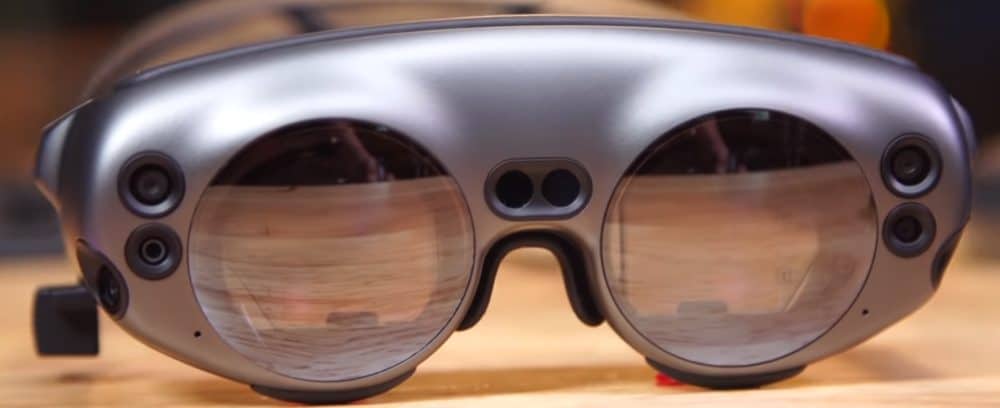
It is the same case with other components of smart glasses. For example, if the manufacturers want to include a camera within the frames of the glasses, the device will become bigger. If you want a longer lasting battery, the device again will be bulkier. There is no way around it.
Time will tell, if and which advancements can be made in terms of the display technology as well as the size and functionality of all the other components of smart glasses.
One thing is quite sure – regular people won`t be roaming around the streets with oversized smart glasses that scream to all the bypassers “look at me, I am a nerd”.
Price
Smart glasses that are focused to the regular consumer, currently cost north of 500$ upwards to 1000$ and more. For this price you can get a high-end smartphone, which at this point compared to smart glasses, has a lot more use-cases and functionality.
In order for regular people to actually start considering purchasing smart glasses, the price level has to come down. However, price alone is not a deciding factor. Which leads us to the next critical issue, that is currently stopping smart glasses from becoming mainstream.
What Pain Points are Smart Glasses Solving?
Each time you are opening your wallet and spending money on a product, you are expecting some value in return. This is especially true in the case of larger purchases.
One has to ask, what is it that you can do better / more efficiently with smart glasses compared to a smartphone for example. At current point of time, it is rather hard to come up with something. There is great potential, but none of it has actualized yet.
In order for smart glasses to really hit the mainstream, there have to be some go-to functionalities that enable people to do things more efficiently than before. Be it turn-by-turn navigation overlaid on physical roads, voice-guided assistant, the possibility to discreetly watch/read content, etc.
Only then will people start letting go of the old ways and adopting new things to their life.
Health Concerns
One particularly obvious issue is the strenuous effect on the body and eyes from prolonged exposure to smart glasses. Unlike other wearable technology, smart glasses are fixed in front of the eye(s).

In the 1970s, Steve Mann, a pioneer of wearable technology discovered that heavy use of his prototype smart glasses led to disturbed vision. Researches in the field of VR smart glasses have been investigating how behavior and normal vision are affected by the prolonged use of eye-sensitive technology. They found that the brain and eye adapt quickly and therefore may be affected with prolonged use.
The other issue is that of Computer Vision Syndrome. This results from looking too long at a point directly in front of the eyes. If the eye remains tense for long enough, the eye muscles will become locked and will not be able to relax for some time. The result of this stiffness may translate into visual disorders and long sight weakness.
What’s In Stock For the Future?
As we’ve mentioned before, the market value for smart glasses has the potential to rocket in virtually every industry that’s worth mentioning.
The main reason why smart glasses haven’t really taken off is because of the challenging technical and technological barriers. Because of these barriers, the functions have stayed limited while the price remains relatively high. And this forms an obvious barrier to entry for most hard-working samaritans.
But smart glasses definitely have the potential. From retail to medicine, from a classroom of ten to a manufacturing floor of a thousand. Smart glasses give us the possibility to create and visualize anything we want in the virtual world, before bringing it to life in the real world.
One understandably frightening scenario is that of people walking around separated from reality. But it’s important to remember that evolution has been a natural process of life on this planet ever since there has been life on this planet.
It’s within our tendency to adapt, to move onward, and to make the best of the innovations we were brilliant enough to come up with.
